Planet of the Apes |  | |
Planet of the Apes -David Hughes takes a look at a classic example of gorilla film making | ||
|
The makeup which had also impressed John Chambers, a former prosthetics designer turned Hollywood makeup artist whose innovative creations had been seen in Star Trek (Mr Spock's ears), and films like A Man Called Horse (Richard Harris' false chest) and The Boston Strangler (Tony Curtis' false nose). “The makeup was crude,” he remarked of Ben Nye's work for the test, “but they had a semblance of what they wanted. That's how the concept was started.” Chambers was required to solve a number of problems before filming could begin. Should the evolved apes look like Neanderthal Man, like animals, or somewhere in between? How could the three subspecies in the script – and the various gorilla, chimpanzee and orang-utan characters – be differentiated? How could masks be made to express the actors' own facial movements, and handle the voice projection required for sound recording? How could the makeup be applied and removed quickly enough to make filming practical? While Chambers struggled to solve these problems, the filmmakers continued reshaping the script, initially with Serling, and later with Oscar winner Michael Wilson, a once-blacklisted screenwriter – originally uncredited on The Bridge on the River Kwai and Lawrence of Arabia due to his suspected Communist allegiances – who knew all about senseless prejudice. Wilson 's experience at Joseph McCarthy's HUAC hearings lent authenticity and added poignancy to the tribunal scene, the simian equivalent of a typical ‘kangaroo court.' With each new draft, the story drifted farther from its source novel, largely because Boulle's depiction of the simians as a technologically advanced race with cars, buildings, helicopters etc. all re-scaled for primates required a far larger budget than Fox would allow. “The early designs were of a very high-tech civilization, which meant you had to design all kinds of special vehicles and buildings and so on,” Heston explained. “And Frank said, ‘I don't have enough budget as it is. Why don't we say it's a very primitive society, and they use horses and wagons and very primitive buildings?' And that's what we did.” Production designer William Creber based his revised concept drawings for the simian community on what he described as “a troglodyte city” carved into mountains in Turkey . The greatest alteration, however, was the relocation of the book's action from an alien planet with its own simian civilisation, to a devastated, post-holocaust Earth of the far future, two thousand years after a nuclear war has wiped almost all traces of mankind from the face of the planet, allowing simians to become the dominant race. The terri ble truth would be revealed to Taylor in the last shot of the film, when his journey into the ‘Forbidden Zone' leads to the discovery of the wrecked Statue of Liberty, half-submerged in the desolate, arid wasteland which is all that remains of New York City , circa 3955 AD. Although the credit for this devastating idea has been attributed to – or appropriated by – just about everyone involved with the picture, Jacobs claimed that it came to him during an informal development meeting with Blake Edwards at a Burbank delicatessen. “As we walked out, we looked up, and there's this big Statue of Liberty on the wall of the delicatessen,” he said. “If we never had lunch in that delicatessen, I doubt that we would have had the Statue of the Liberty at the end of the picture.” Jacobs further claimed that Boulle thought the twist was “more inventive than his own ending, and wished that he had thought of it when he wrote the book.” Boulle remembered it differently: “I disliked, somewhat, the ending that was used. Personally, I preferred my own.” One further change was to occur just prior to the commencement of principal photography on May 21, 1967 , as Edward G Robinson withdrew from the role of Dr Zaius, fearing that his ill health would not suffer the daily ordeal of up to five hours in the makeup chair. “It's a good part,” he told Heston, “but that makeup is a bitch. My heart's just about gone to hell as it is; I couldn't stand it.” Robinson, who died shortly after filming Soylent Green , another sci-fi milestone starring Charlton Heston, was replaced at Heston's suggestion by another of his former co-stars: Maurice Evans ( The War Lord ), who, along with Roddy McDowall ( Cleopatra ) and Kim Hunter ( Stairway to Heaven ), would fill the film's principal simian roles. “For them, too, the makeups were hell to put on, endure, then painfully take off at the end of a long shooting day,” Heston sympathised, recalling that after several months of filming, he failed to recognise Hunter, whom he had only ever seen transformed into chimpanzee animal psychologist Zira. “The shoot was a very tough one,” Heston understated. “Summer in the Arizona desert is no fun. Barefoot and all but naked in most of the scenes, I was ridden down by gorillas, whipped, chained, gagged, stoned (even rubber rocks hurt), fire-hosed and finally trapped in a net and jerked upside down.” After a day being driven around a cage with a fire-hose, the actor caught a dose of the flew, reducing his familiar deep vocal tones to a rasping croak; as it happened, it was precisely what was required for the scene in which Taylor, rendered mute (like most of the planet's other humans) by a throat wound, utters his famous first words to the gorillas manhandling him: “Take your stinking paws off me, you damn dirty ape!” This line, together with Taylor 's climactic condemnation of man's foolishness following his discovery of the half-buried Statue of Liberty, arguably rates as being among science fiction cinema's most memorable lines of dialogue. Premiered on February 8, 1968 , Planet of the Apes was a critical and commercial smash, grossing more than $26 million – more than four times the production budget of $5.8 million. “It not only grossed enormous numbers, it created a new film genre: the space opera,” Heston remarked. “Fantasies set in outer space had long been a staple of the comic strips and Saturday-morning kiddie TV, but had been disdained by Hollywood,” he added, illustrating the studios' initial reluctance to green-light the Planet of the Apes , which had endured one of the most prolonged and difficult development periods of any film, only to become one of the biggest successes of the year – and a virtual lifesaver for 20th Century Fox, which, less than a year earlier, had lost a fortune, even by today's standards, on the epic costume drama Cleopatra . The following year, as the first of four sequels was going into production, Planet of the Apes received two Academy Award nominations: for Morton Haack's Costume Design, and for Jerry Goldsmith's innovative and outlandish music score. Although the film won neither award, the Academy created a special award for John Chambers' outstanding makeup, presented by Walter Matthau – and a chimpanzee! Although a number of reasons were cited for Apes ' across-the-board appeal, it was obvious that the film worked on at least two distinct levels. “Whether by design or accident, [it] had this double appeal,” Evans, who returned as Dr Zaius in the first Apes sequel, explained. “The appeal to youngsters [was] as a pure science fiction film, but it had a message to deliver which apparently communicated very clearly to the adult audience.” But had Schaffner set out to make a sci-fi action adventure with an intriguing premise and an unbeatable twist; or a Swiftian satire with a polemical commentary on the politically turbulent times of the late 1960s? “I had never thought of this picture in terms of being science fiction,” Schaffner asserted, echoing Pierre Boulle's opinion of his original novel. “It was a political film.” But if Planet of the Apes was a message movie, what was the message? “That man is a seriously flawed animal, [but] he must learn to deal with his flaws, [because] it's not something you can eliminate,” suggested Heston. “That man better take a jolly good look at his own way of living, and re-evaluate what's going on with his morals, his belligerency [and] all the things that are making life so difficult in the world today,” offered Evans. “That human mores are no different than that of the simian society, and a lot of our habits, customs, attitudes etc. are pretty ridiculous,” added Schaffner. “That the apes were afraid of humans because they were odd; they were different, [which] is half our problem in the world today,” agreed Hunter, who reprised the role of Zira in two further Apes movies. “We're antagonistic and aggressive and all of these terri ble things that human beings can be because we don't understand [other cultures]; because they are different.” After thirty years, four theatrically-released sequels, two television series (one of them animated) and Tim Burton's smash hit 2001 “re-imagining” – starring Mark Wahlberg, Tim Roth, Helena Bonham Carter, Paul Giamatti and Estella Warren – Planet of the Apes continues to show remarkable endurance. Today, more than 35 years after its original release, the original film packs as powerful a punch as ever, despite the fact that its shock ending is familiar even to those who have never seen the film, and the impact of its message amid the political upheaval and apocalyptic fears of 1968 – the year of student riots in Paris, war in Vietnam, the assassinations of Martin Luther King and Robert F Kennedy – is almost impossible to imagine. Ultimately, Planet of the Apes can perhaps be viewed as symbolically similar to its most famous image – the Statue of Liberty itself – and representative of much the same thing: an uncomplicated political message delivered to a mass audience via a populist medium. Not bad for a movie about talking monkeys.
|
| |||||||||||||||||||||||||||||||||||
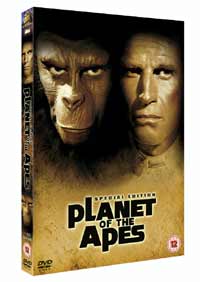
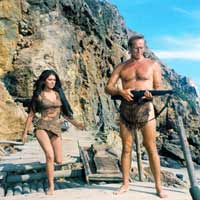
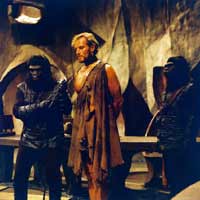
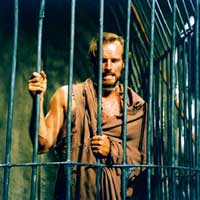
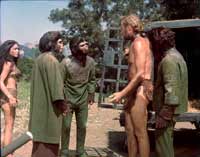
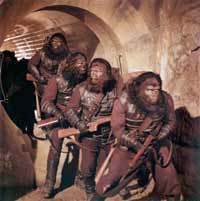






![Luke De-Sciscio talks to us about having the courage to be yourself, forgiving that which is outside of one's control and following whims [EXCLUSIVE] Luke De-Sciscio talks to us about having the courage to be yourself, forgiving that which is outside of one's control and following whims [EXCLUSIVE]](https://images.contactmusic.com/images/home/homepage/luke-de-sciscio-abof-a.jpg)

